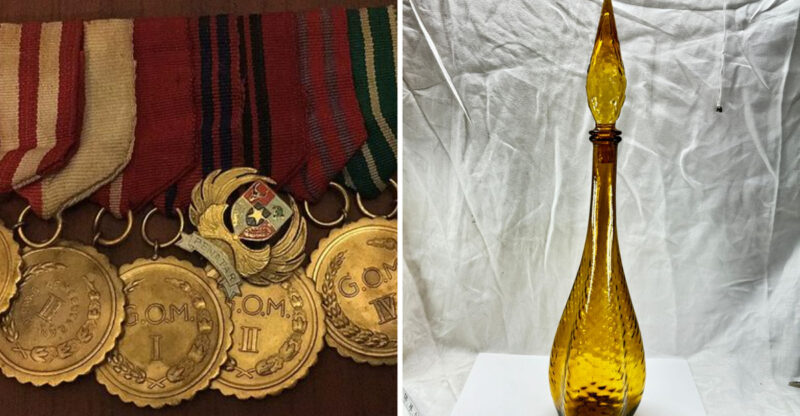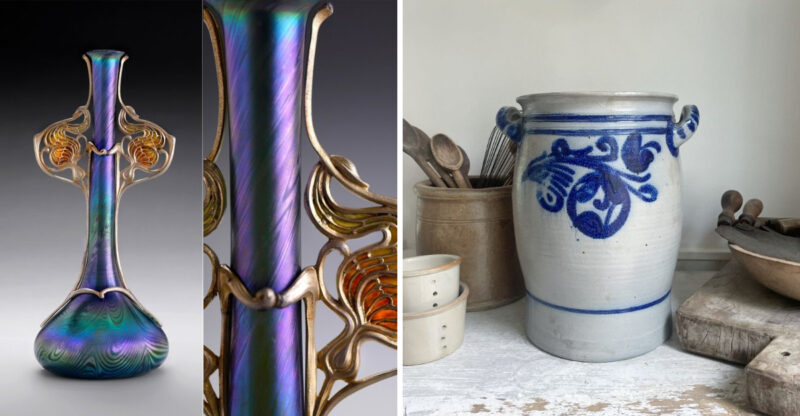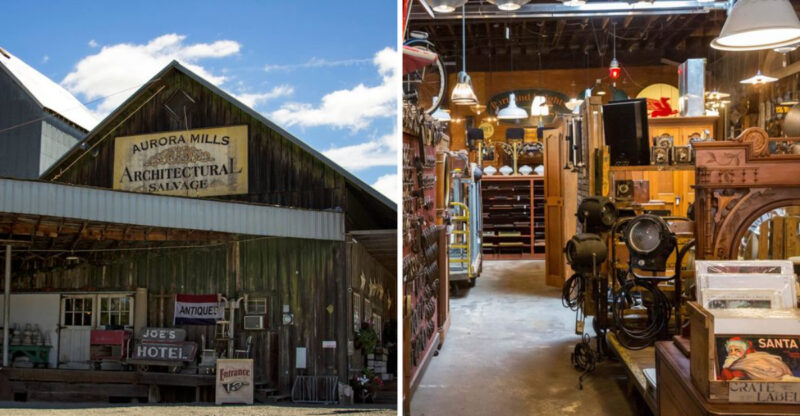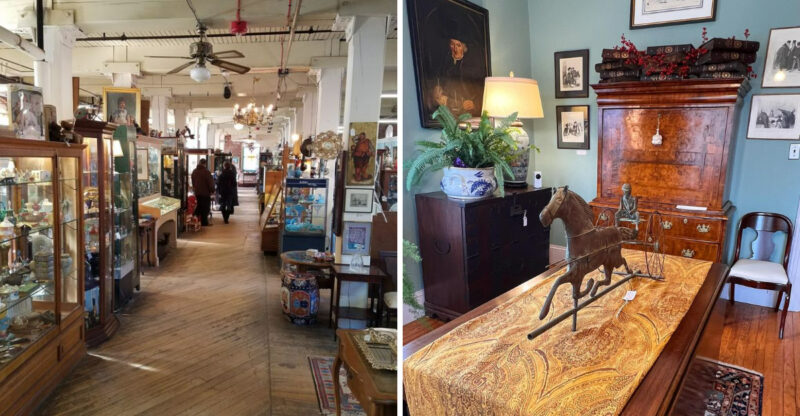Top Antique Rarities Georgia Collectors Are Racing To Find
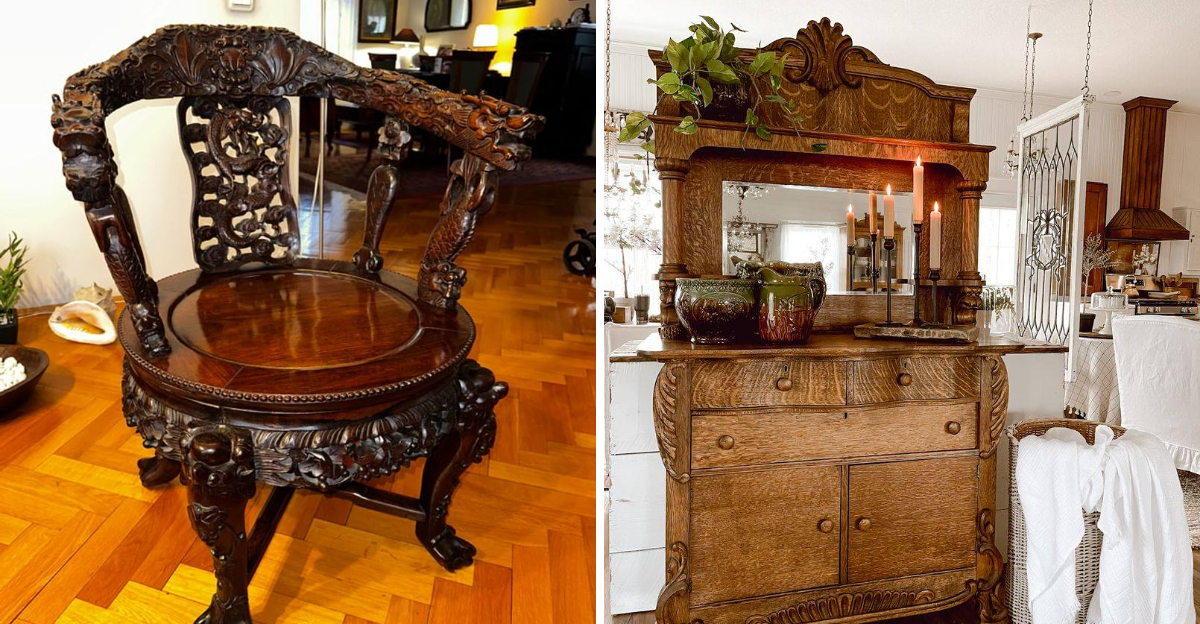
Georgia holds a treasure trove of history, and collectors across the state are hunting down pieces that tell stories of the past. From elegant furniture to hand-painted pottery, these items aren’t just decorations but windows into Southern heritage.
The thrill of discovering a rare piece at an estate sale or hidden in an attic keeps enthusiasts coming back for more. Here are the most sought-after antique rarities that Georgia collectors can’t stop chasing.
1. Southern Sheraton Furniture
When you walk into a room with authentic Sheraton pieces, you know immediately that history just showed up. Southern Sheraton furniture carries that signature elegance with tapered legs and inlaid details that scream sophistication without trying too hard.
Collectors hunt these beauties because they blend function with artistry in ways modern furniture forgot how to do. Look for pieces with original finishes and dovetail joints.
Georgia estate sales sometimes hide these gems under dusty sheets, waiting for someone who recognizes real craftsmanship. Snap them up before someone else does.
2. Georgia Painted Pottery
How many pottery pieces can claim they were shaped and painted by hands that never touched a factory line? Georgia painted pottery represents folk art at its finest, with patterns that range from whimsical florals to geometric designs.
These pieces weren’t made for museums but for everyday use, which makes surviving examples even more valuable. Check for signatures or marks on the bottom.
Local artisans left their creative fingerprints on every bowl and vase, turning clay into collectible art. Flea markets and barn sales are your best hunting grounds.
3. Handcrafted Quilt Patterns
Though quilts might seem like grandma’s bedding, collectors know they’re wearable history stitched with intention and skill. Handcrafted quilt patterns from Georgia showcase regional designs that tell stories through fabric and thread.
Look for stitching consistency and color combinations that reflect specific time periods or communities. Some patterns were passed down through generations, making each quilt a family heirloom.
Condition matters, but even worn quilts with original fabrics hold serious value. Attics and estate auctions are where these textile treasures hide.
4. Georgian Silverware
Did you know that silverware from the Georgian era wasn’t just for eating but for showing off your social standing? Georgian silverware features elaborate engravings and hallmarks that authenticate its age and origin.
Collectors obsess over these pieces because they combine precious metal with artistic detail that modern flatware can’t touch. Check for maker’s marks and weight, as solid silver commands top dollar.
Tarnish is fixable, but missing pieces from a set drop value fast. Hunt through antique shops and auctions for complete or near-complete collections.
5. Antique Wooden Bowls
Where else can you find kitchenware that improves with age and tells you stories through its grain? Antique wooden bowls were carved by hand, often from single pieces of wood, giving each one a personality that plastic could never fake.
Look for wear patterns that show decades of use, because that patina is what collectors crave. Cracks aren’t always deal-breakers but check that the bowl still holds its shape.
Local craftsmen turned these bowls on lathes or carved them by hand, making each one unique.
6. Vintage Mantel Clocks
Are you ready to own a timepiece that actually makes you stop and appreciate the moment? Vintage mantel clocks from Georgia homes combine mechanical precision with decorative flair that modern clocks skip entirely.
These clocks often feature brass fittings, chimes, and wooden cases that showcase craftsmanship from a slower era. Working mechanisms add value, but even non-functional clocks attract collectors for their aesthetic appeal.
Estate sales in older neighborhoods are goldmines for finding these ticking treasures. Wind them gently and watch time come alive.
7. Early Wrought Iron Candle Holders
Hence the popularity of these metal marvels, wrought iron candle holders represent blacksmith artistry that lit homes before electricity arrived. Early wrought iron candle holders feature hand-forged details with twists and curves that no machine could replicate.
Collectors prize these for their weight, texture, and the visible hammer marks that prove human hands shaped every inch. Look for rust that adds character without compromising structural integrity.
Southern blacksmiths created these functional sculptures for everyday use, making them both practical and beautiful. Antique shops and farm auctions are your best bets.
8. Victorian Era Sideboards
However massive they appear, Victorian era sideboards dominated dining rooms with a presence that commanded respect and admiration. Victorian era sideboards showcase intricate carvings, marble tops, and storage compartments that modern furniture simplified away.
These pieces require space, but collectors chase them for their statement-making ability and craftsmanship. Check for original hardware and intact marble surfaces, as replacements diminish value.
Georgia homes from that period sometimes still house these giants, waiting for someone to appreciate their grandeur. Moving them is an adventure, but worth every muscle strain.
9. Rare Ceramic Pitchers
When ceramic pitchers were made for pouring water, not for sitting on shelves collecting dust, artisans gave them character that modern kitchenware forgot. Rare ceramic pitchers from Georgia feature unique glazes, hand-painted designs, and shapes that reflect regional pottery traditions.
Collectors hunt for makers’ marks and unusual color combinations that indicate limited production runs. Chips and cracks happen, but rarity often outweighs minor damage in value.
These pitchers served real purposes in homes, making their survival even more impressive. Antique malls and online auctions sometimes surprise you with hidden gems.
10. Rustic Farmhouse Tables
It’s amazing how a table can hold memories of meals, conversations, and generations all in its grain and scratches. Rustic farmhouse tables from Georgia farms feature thick planks, sturdy construction, and a worn patina that tells stories words can’t capture.
These tables were built to last lifetimes, not trends, making them perfect centerpieces for modern homes craving authenticity. Look for original joinery and avoid heavily refinished pieces that erase character.
Farm auctions and rural estate sales are where these workhorses wait for new homes. Bring a truck and some friends.
11. Antique Porcelain Dinnerware
Though dinnerware seems fragile, antique porcelain pieces survived decades because families treated them like treasures, not disposables. Antique porcelain dinnerware from Georgia collections features delicate patterns, gold trim, and translucency that modern plates can’t match.
Collectors seek complete or near-complete sets, as individual pieces hold less value unless exceptionally rare. Check for crazing, chips, and faded patterns that indicate age and use.
These dishes graced special occasions and holiday tables, making them emotional as well as monetary investments. Antique shops and online marketplaces are your hunting grounds.
12. Carved Wooden Chairs
Are wooden chairs just for sitting, or are they sculptures that happen to support your weight? Carved wooden chairs from Georgia craftsmen showcase spindle work, relief carvings, and joinery that modern furniture factories abandoned for speed.
These chairs often come in sets, but even single pieces attract collectors for their artistic merit. Look for original finishes and stable construction, as repairs can be costly.
Rockers, dining chairs, and accent chairs all have their fans among collectors. Estate sales in historic districts sometimes hide complete sets waiting for discovery.
13. Early American Pewter Utensils
Where silver was too expensive and wood too plain, pewter utensils served colonial and early American families with understated elegance. Early American pewter utensils feature simple designs, maker’s marks, and a soft gray patina that develops over centuries.
Collectors value these for their historical significance and the craftsmanship required to cast and finish each piece. Check for touch marks that identify makers and regions, as provenance matters.
These utensils were everyday items that somehow survived into collectible status. Antique shows and specialized dealers are your best sources for authentic pieces.


